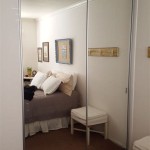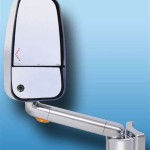Can You Screen Mirror to a Smart TV Without Wi-Fi?
Screen mirroring, the ability to wirelessly display the contents of a smartphone, tablet, or computer screen on a larger display like a television, has become increasingly popular. While Wi-Fi is the most common method for achieving this, there are scenarios where a Wi-Fi network is unavailable or undesirable. This article explores alternative methods for screen mirroring without relying on a traditional Wi-Fi network.
Wired Connections
A direct wired connection offers a reliable and often higher-quality mirroring experience compared to wireless methods. This approach bypasses potential Wi-Fi interference and latency issues. Several options exist for wired mirroring.
HDMI Cables: The most straightforward wired solution involves using an HDMI cable to connect the source device directly to the television's HDMI port. Many modern smartphones and tablets support HDMI output, often requiring an adapter to convert the device's output port (e.g., USB-C, Lightning) to HDMI. This method offers a stable, high-bandwidth connection suitable for streaming high-definition video and audio.
USB-C Connections: Some newer smart TVs and devices support video output directly over USB-C. A USB-C cable connecting the source device to a compatible TV port can facilitate screen mirroring. This approach simplifies the connection process and may also provide power to the source device.
MHL Cables: Mobile High-Definition Link (MHL) cables provide another wired option, primarily for older devices. MHL utilizes micro-USB or similar ports and requires a specific MHL-to-HDMI adapter to connect to the TV. MHL support has diminished with the rise of USB-C, but remains viable for some devices.
Miracast
Miracast is a wireless technology that allows screen mirroring between compatible devices without requiring a Wi-Fi network. It creates a direct peer-to-peer wireless connection between the source device and the display. Many smart TVs, particularly those manufactured before widespread Wi-Fi Direct adoption, incorporate Miracast support. Similarly, several Android and Windows devices offer native Miracast capabilities.
To utilize Miracast, both the sending and receiving devices must be Miracast-certified. Activating Miracast typically involves enabling the feature on both devices and selecting the target display from the available options on the source device. Miracast generally offers good performance for video streaming and presentations, though its compatibility can be inconsistent across devices.
Wi-Fi Direct
While often associated with Wi-Fi, Wi-Fi Direct operates independently of traditional Wi-Fi networks. It enables devices to establish a direct wireless connection similar to Bluetooth but with greater range and bandwidth. Many modern smart TVs and mobile devices support Wi-Fi Direct, making it a viable option for screen mirroring without a router.
Using Wi-Fi Direct for mirroring usually involves activating the feature on both devices and pairing them. The source device then initiates the mirroring connection. Wi-Fi Direct offers good performance for various media, including video and audio, and exhibits wider device compatibility compared to Miracast.
DLNA
The Digital Living Network Alliance (DLNA) standard facilitates media sharing and streaming within a home network. While it doesn't offer true screen mirroring, DLNA allows users to access and play media content stored on their source device (e.g., photos, videos, music) on a DLNA-compatible TV. Many smart TVs and media players support DLNA, enabling wireless media playback without direct screen replication.
Utilizing DLNA involves ensuring both the source device and TV are connected to the same network, even if that network doesn't have internet access. The source device then uses a DLNA-compatible app to select the TV as the playback target. Though not strictly screen mirroring, DLNA provides a convenient method for sharing media content without a Wi-Fi connection to the internet.
Third-Party Apps
Various third-party apps can facilitate screen mirroring without relying on Wi-Fi. These apps often leverage alternative connection methods such as Bluetooth or create local hotspots to establish communication between the source device and the TV. However, their functionality and effectiveness can vary significantly, and many have limitations in terms of resolution, latency, or supported media formats.
Choosing a reputable third-party app with positive user reviews is crucial. Users should also be aware of potential limitations and compatibility issues, particularly concerning older devices or less common TV models. Experimenting with different apps may be necessary to find a suitable solution for specific needs.
Local Network Streaming
Certain media players and streaming devices facilitate media streaming within a local network. Devices like Chromecast, Roku, and Amazon Fire TV can create their own local networks, allowing users to stream content from their source device to the streaming device connected to the TV. This approach bypasses the need for a traditional Wi-Fi router by creating a dedicated streaming network.
To utilize local network streaming, the source device and the streaming device must be connected to the same local network. This is usually accomplished by connecting to the Wi-Fi network created by the streaming device. The source device can then cast or stream content to the streaming device, which in turn displays it on the TV. This method offers a versatile solution for streaming media without requiring an internet-connected Wi-Fi network.

2024 Tutorial How To Mirror Phone Tv Without Wi Fi

How To Mirror Phone Screen Without Wifi 4 Simplest Way Help

How To Mirror Phone Screen Without Wifi 4 Simplest Way Help

2024 Tutorial How To Mirror Phone Tv Without Wi Fi

How To Mirror Iphone Tv Without Wi Fi

3 Ways To Mirror Iphone Tv Without Apple Istreamer

How To Cast Any Smart Tv Without Wifi Airdroid

How To Connect Phone Tv Wirelessly With Usb Without Wifi And More 91mobiles Com

How To Mirror Iphone Roku Without Wifi 5 Steps With Pictures

How To Mirror Iphone Tv Without Wi Fi







